Lavash: Basic Information
Pronunciation
Alternative Name(s)
Dish Type
Course
Mealtime
Popular Variations
Lavash: Ingredients and Preparation
Main Ingredients
Main Cooking Method
Preparation Process
Lavash: A Deep Dive
Cultural Significance
Taste
Texture
Aroma
Color
Serving Style
Serving Temperature
Accompaniment
Occasions
Seasons
Special Diets
Calories
Popularity
Popular Similar Dishes
- Yufka
- Naan
- Tortilla
- Pita
- Roti
- Focaccia
- Matnakash
- Sangak
- Tandyr Nan
- Laffa
Popular Dining Area
Lavash is a thin, leavened flatbread of Armenia or Iran traditionally baked in a clay oven known as a tandoor or on a sajj.
However, modern cooking has made lavash easier to make using a griddle or wok. Interestingly, the earliest form of this thin bread was a type of cake cooked over heated rock.
Originating from the Middle East, lavash is a national specialty of many countries in the South Caucasus, West Asia, and regions around the Caspian Sea. It is especially prevalent in Armenia, Azerbaijan, Iran, and Turkey, especially as a street food item.
Also known by many names like lavas, lavasi, or lawas, the bread is crafted from a simple mixture of flour, water, yeast, sugar, and salt. Occasionally, it’s adorned with sesame or poppy seeds before baking, adding an extra layer of flavor and texture.
Lavash has been inscribed on UNESCO’s Representative List of the Intangible Cultural Heritage of Humanity twice: firstly in 2014 for its preparation process, meaning, and appearance, and again in 2016 as part of the making and sharing of flatbread in communities across Azerbaijan, Iran, Kazakhstan, Kyrgyzstan, and Turkey.
Aside from the detailed characteristics of lavash, you can uncover the history, usage purposes, custom associations, and accompaniments to pair with the flatbread. Then, don’t miss the pros and cons of lavash, how it stands with other flatbread varieties, the exciting FAQs, and other similar dishes.
Key Points
Lavash Images
What Is The History of Lavash?
Lavash traces its origins to ancient culinary traditions of the South Caucasus and West Asia. The bread’s evolution is marked by a shift from baking bread as thick cakes on heated rocks or in embers to cooking thinner flatbreads on terracotta griddles, ensuring they cooked through without burning.
This innovative technique, later passed down through generations, became the foundation for lavash’s preparation. Commonly, the flatbread is often attributed to Armenia or Iran for its origin.
However, it’s crucial to recognize lavash as a shared heritage among several regional nations. Usually, each country has its own way of adapting lavash into the local diets.
What Is Lavash Used For?
Lavash offers a diverse range of uses across different cultures. When fresh, it’s flexible, making lavash an ideal choice for wrapping sandwiches. However, the flatbread also dries out rapidly, turning brittle. However, lavash also has various uses in different countries and cooking cultures:
- In Armenian: Locals in villages, dried lavashes are stored in stacks, ready to be rehydrated with a sprinkle of water when needed. Then, Armenians use lavash in traditional dishes like khash or wrapped around khorovats, an Armenian specialty.
- Other countries: In Iran, Turkey, and other Middle Eastern regions, lavash plays a pivotal role, pairing perfectly with kebabs, forming dürüm wraps such as tantuni. It’s rehydrated with water, butter, or cheese for quick meals when dried.
- Modern culinary: Many twists also use lavash to make pizza and chips.
Turkish cuisine even sees lavash in sweet dishes, accompanying desserts like kaysefe and helva. In addition to that, lavash is crucial in some traditions and customs of many countries.
What Are Some Traditional Uses and Customs Associated with Lavash?
Lavash is deeply embedded in cultural traditions. In Armenia, the groom’s mother offers the newlyweds lavash with honey, symbolizing wishes of sweetness and prosperity. Plus, the Armenian Apostolic Church uses dried lavash in Eucharist traditions.
In Azerbaijan’s Sabirabad District, a bride is often greeted with lavash on her shoulder by her mother-in-law, blessing her with wealth and luck. As for Novkhani, post-funeral customs include preparing ‘kyulchya’, sometimes with halva wrapped in lavash.
To add to that, the art world also celebrates lavash. Minas Minassian’s depiction of women baking lavash graces Yerevan’s National Museum of Art. With a strong bond to the culture of many countries, it’s easy to see lavash accompanying many food items.
What to Eat with Lavash?
Lavash pairs seamlessly with various dishes, here are a few examples:

Freshly baked lavash:
They are ideal for wrapping sandwiches and are often used in Armenia to encase khorovats. In regions like Iran and Turkey, lavash wraps around kebabs.
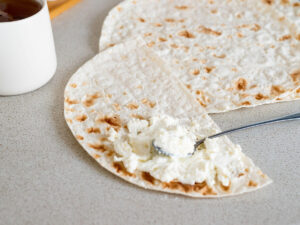
Sweet dishes:
Turkish cuisine employs lavash in sweet dishes accompanying desserts.
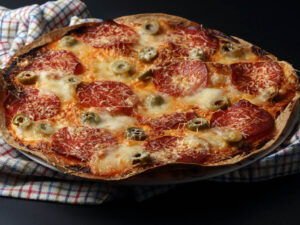
Pizza base:
Modern culinary explorations even use lavash as an alternative pizza base. Also, hummus is a favorite dip with lavash, with other options like guacamole, salsa, cheese, or bean dip.
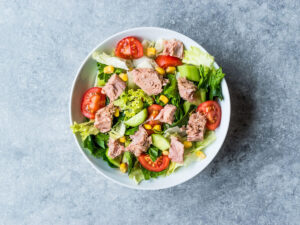
Salad:
Another way to enjoy lavash is to mix the cracked flatbread with fruits or vegetables to create a delectable salad.
With that said, you should consider the pros and cons before consuming lavash.
Pros and Cons of Eating Lavash
Lavash is undoubtedly delicious, but you should consider the advantages and disadvantages when consuming this flatbread.
Pros
Cons
In evaluating the pros and cons of lavash, it becomes evident how lavash differs from other flatbread variants.
How Does Lavash Compare to Other Flatbreads?
When placed on the table with other flatbreads, Lavash has many differences with its thinness that sets it apart from many other varieties. This leavened flatbread possesses a soft and crispy profile when freshly baked.
Another feature is the cooking method, which requires a heated tandoor to cook the dough thoroughly. Additionally, lavash plays a major role in the cultures of Armenia, Azerbaijan, Iran, and Turkey.
To see how lavash stands out from other flatbreads, I’ll compare it with some of the most iconic varieties like naan, tortilla, and pita.
What Are The Similarities And Differences Between Lavash and Naan?
Both lavash and naan are flatbreads traditionally cooked using a tandoor oven to achieve the signature charred exterior. While the similarities between lavash and naan exist, they also have some distinguishing features, as shown in the following table:
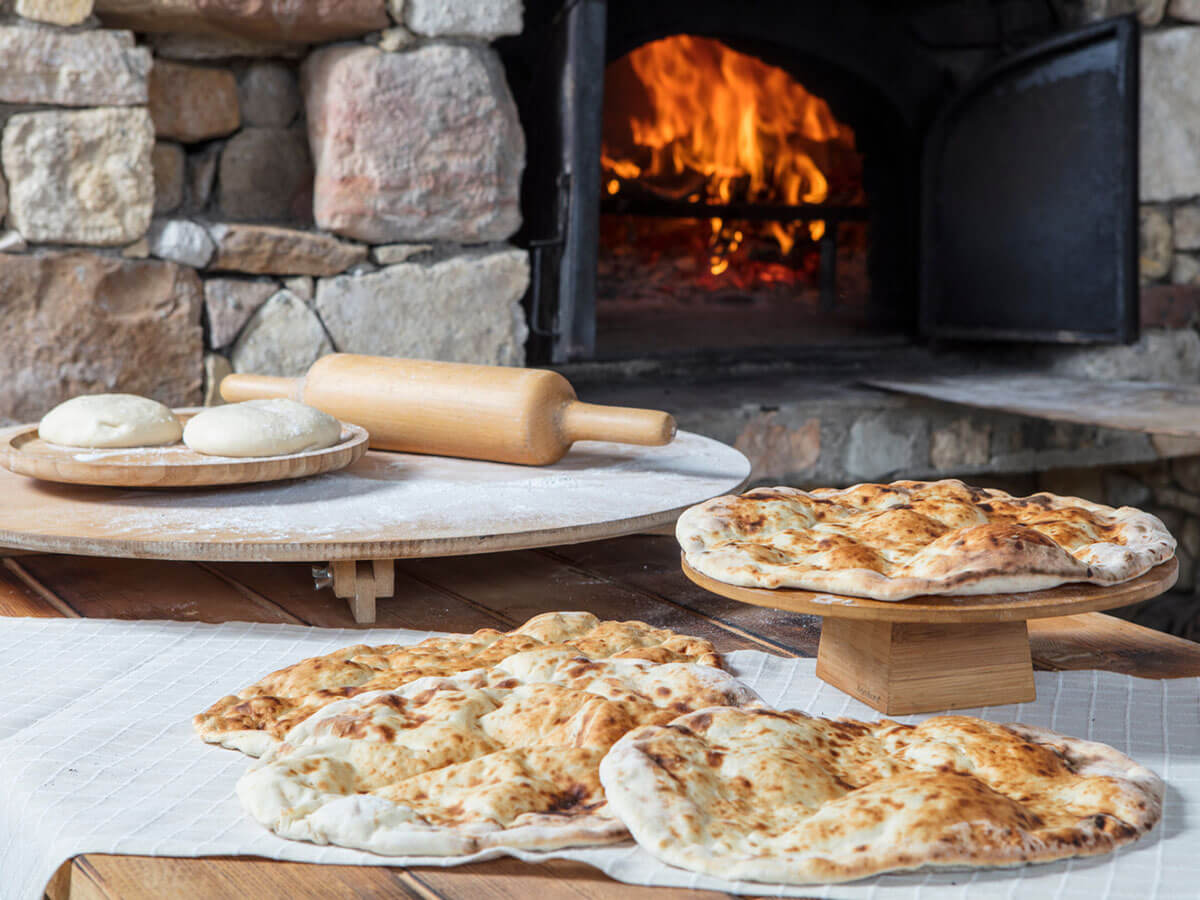
Lavash
Origin: South Caucasus, Western Asia, Caspian Sea regions
Cooking Method: Baked in a tandoor or on a sajj
Texture: Thin, ranges from soft to crisp
Significance: Cultural importance in Armenia, Azerbaijan, Iran, and Turkey

Naan
Origin: South Asia, Indonesia, Malaysia, Myanmar, Caribbean
Cooking Method: Oven-baked (tandoor) or tawa-fried
Texture: Thicker and softer
Significance: Popular in the Indian subcontinent with various types
While lavash and naan showcase unique characteristics and origins, it’s interesting to note how different cultures produce varying flatbreads, much like the tortillas in Latin America.
How Does Lavash Compare with Tortilla?
Let’s get to know about the differences between lavash and tortilla through this table:

Lavash
Region of Origin: South Caucasus and West Asia
Ingredients: Doesn’t include cornmeal
Texture: Crispy
Shape: Sometimes rectangular
Common Uses: Often used for wrapping other ingredients

Tortilla
Region of Origin: Mexico and Central America
Ingredients: Includes cornmeal
Texture: Softer and more pliable
Shape: Always round
Common Uses: Mainly used for making tacos and burritos
After delving into the nuances that differentiate lavash from the tortilla, it’s equally intriguing to explore how lavash compares to pita.
What Makes Lavash Distinguish from Pita?
Interestingly, lavash and pita share elements that make up the dough. However, the resulting appearance and purpose of these two bread types are completely different, which are depicted in the following table:

Lavash
Appearance: Doesn’t have a pocket
Usage: Used as a wrapping
Baking Result: Lies flat

Pita
Appearance: Always has a unique pocket
Usage: Served with fillings stuffed inside the pocket
Baking Result: Puffs up
With all of those comparisons, I hope you’re still excited to have a peek at some short questions that people often wonder about lavash.


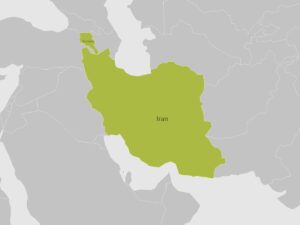
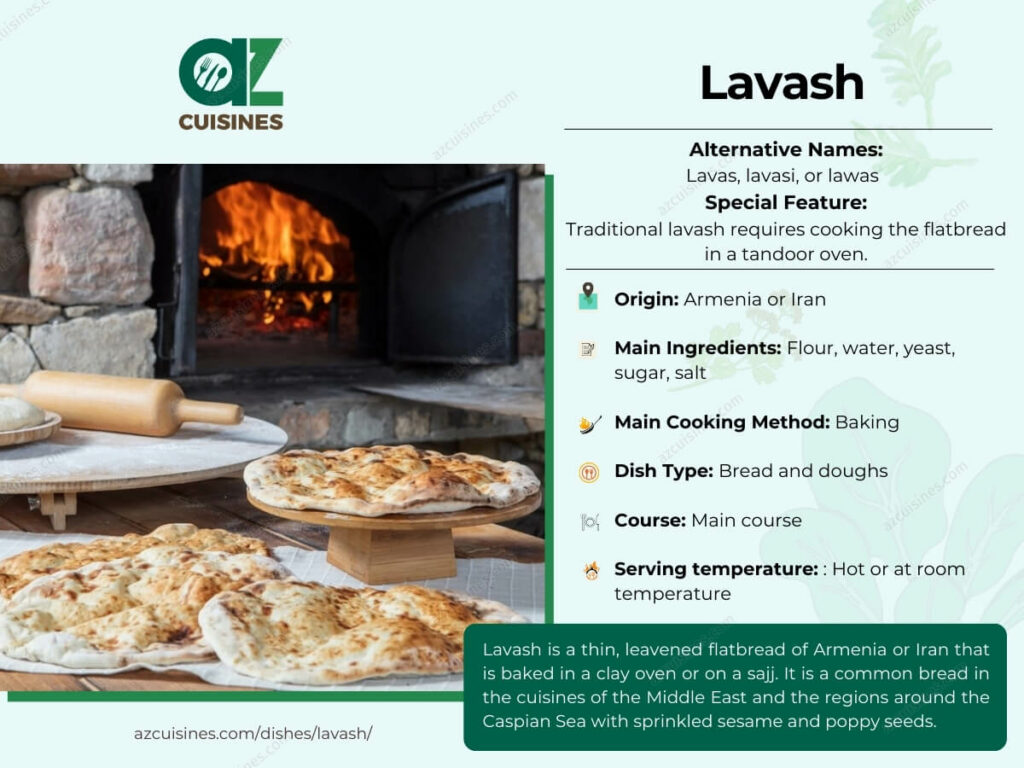

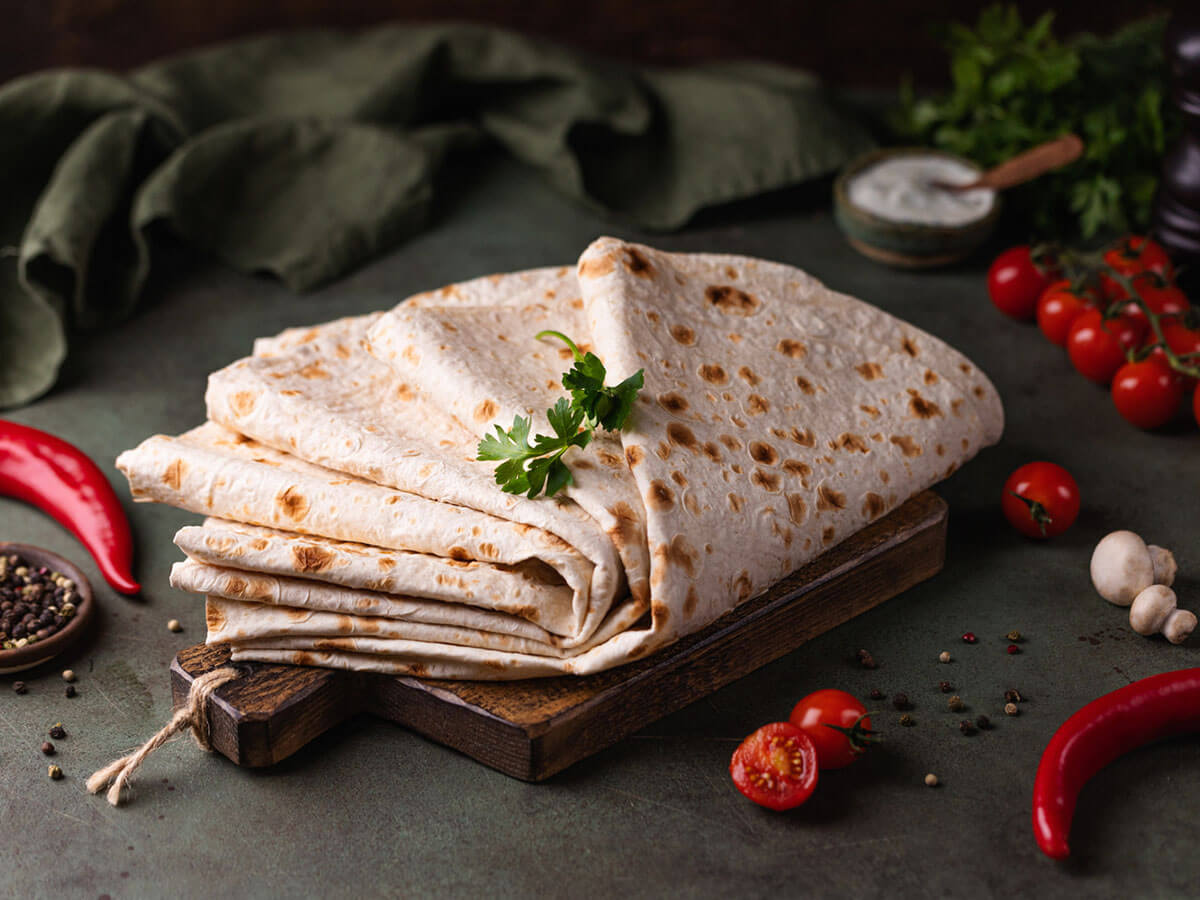


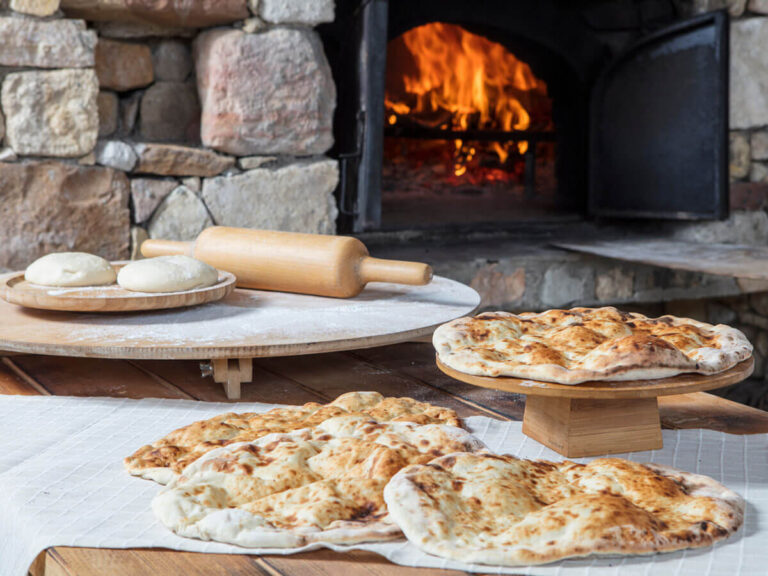
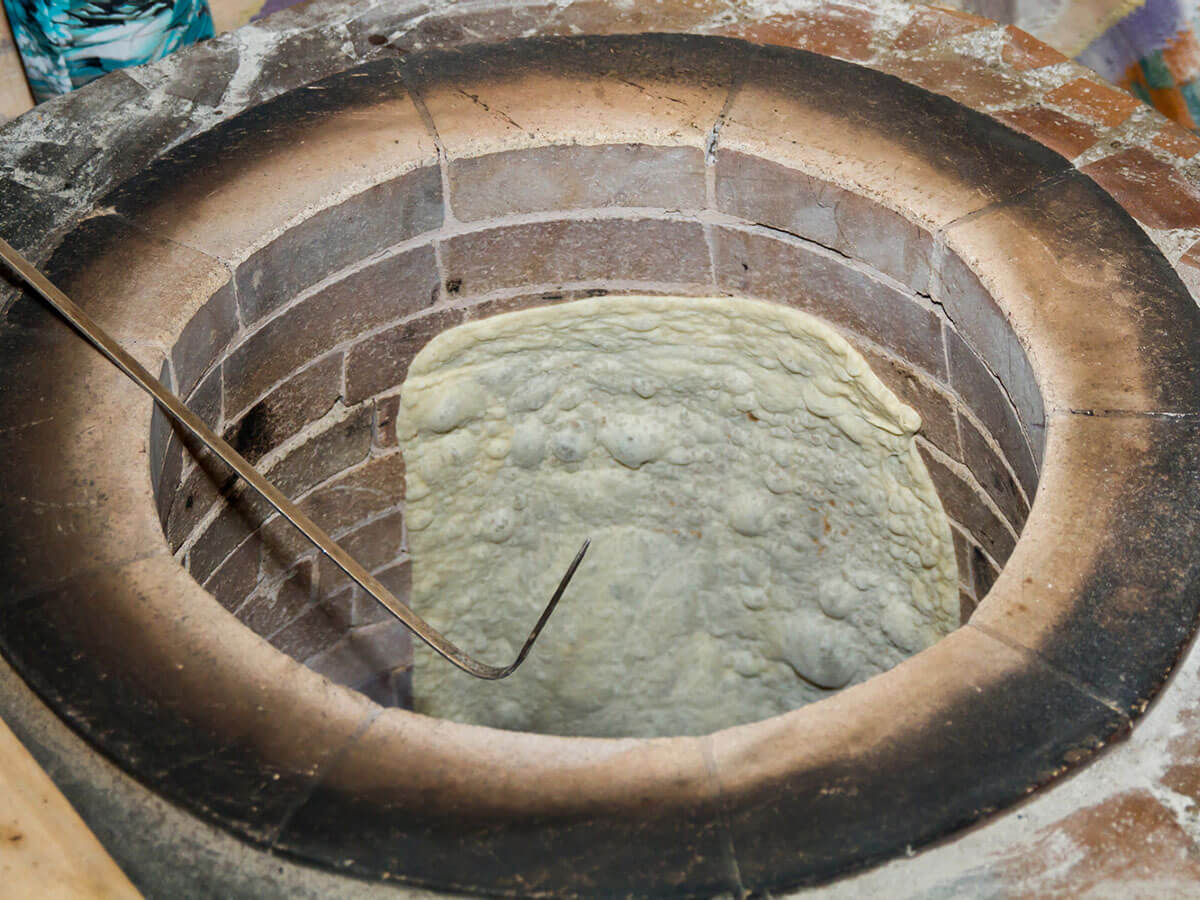

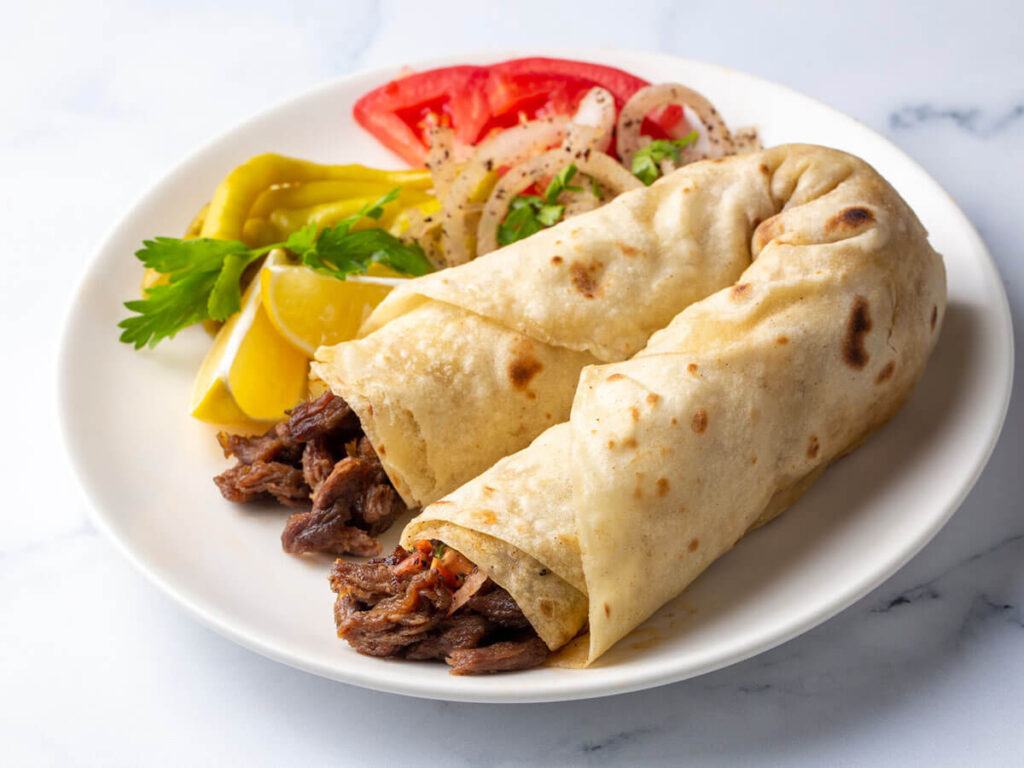


Adam Sam
Senior Food and Drink Editor
Expertise
Food Writer & Recipe Developer, Recipe Tester, Bartender, Cooking-video Maker, Editor In Chief
Education
Adam Sam, an experienced food writer and recipe developer, is passionate about blending diverse culinary traditions, national dishes, and innovative beverages, showcasing his proficiency in both traditional and modern recipe testing.
As the Editor-in-Chief, he elevates culinary content from street food to fine dining, focusing on Western cuisine and types of drinks at azcuisines.com, and is professional in creating engaging cooking videos that simplify complex dishes and ingredients.
His passion for food is evident in his writing, where he uniquely merges various cultures, traditions, and contemporary trends, skillfully combining classic recipes with modern cooking methods.